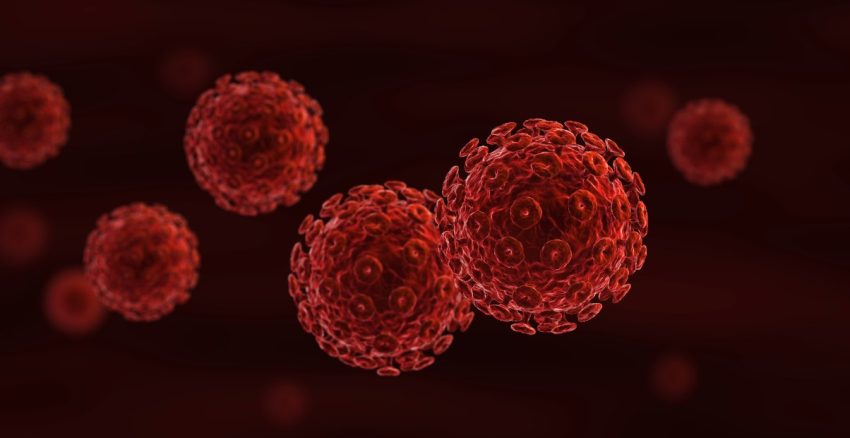Visible changes in the skin, such as neoplasms and pigment spots, can cause significant anxiety and aesthetic discomfort. Among these, papillomas are a common concern that can affect individuals of all ages. This article will delve into what papillomas are, their types, causes, symptoms, potential dangers, prevention methods, and treatment options. For those seeking professional help, MSM Pro Derma Poly Clinic LLC offers comprehensive services for diagnosing and treating papillomas.
What are Papillomas?
Papillomas are benign skin growths caused by the human papillomavirus (HPV). They can appear on various parts of the body, including the fingers, soles of the feet, face, chest, genital areas, and more. Although they are usually non-cancerous, some types of papillomas have the potential to develop into malignant formations if left untreated.
Types of Papillomas
Vulgar Papillomas (Common Warts)
– Description: These are the most common type of growths.
– Appearance: Typically found between the fingers, on the soles of the feet, and on the chin.
– Characteristics: They are generally rough, raised, and have a cauliflower-like appearance. Common warts are usually painless but can be uncomfortable depending on their location, such as on the soles of the feet where they might cause discomfort while walking.

Filiform Papillomas (Acrochords)
– Description: Common in older adults.
– Appearance: Dense, yellowish growths with a thin stalk.
– Characteristics: They tend to increase in size over time and are often found on the neck, eyelids, and armpits. These papillomas are typically soft to the touch and can cause irritation if they rub against clothing or skin.
Flat Papillomas
– Description: Small, numerous, and flat-shaped skin formations.
– Appearance: Flesh-colored or slightly brown, slightly raised above the skin.
– Characteristics: Typically located on the face, upper chest, and anal area. Flat warts are often smoother than other types of warts and can appear in large numbers.
Genital Warts (Condylomas)
– Description: Appear on the genital areas.
– Transmission: Predominantly through sexual contact.
– Characteristics: Can potentially degenerate into malignant formations. They may appear as small, flesh-colored bumps or have a cauliflower-like appearance and can cause discomfort, itching, or pain.
Other Types Based on Macroscopic Structure
Pointed Papillomas
– Description: Sharp top, wide middle, and narrow base.
– Appearance: Resemble a cockscomb.
– Location: Found on the lips, in the urethra, and the anogenital area. They can be painful and cause significant discomfort, especially if located in sensitive areas.

Squamous Papillomas
– Description: Covered with flat, non-keratinized epithelium.
– Location: Often found in the oral cavity, larynx, esophagus, and uterus. These papillomas can interfere with normal functions, such as speaking or swallowing, depending on their location.
Causes of Papillomas
– Decreased Immunity: A weakened immune system makes the body more susceptible to HPV infection. Conditions such as HIV/AIDS, certain medications, and chronic illnesses can impair the immune response.
– Hormonal Imbalance: Hormonal fluctuations can trigger the growth of papillomas. For instance, pregnant women or individuals undergoing hormone therapy may experience an increase in papillomas.
– Metabolic Disorders: Conditions affecting metabolism, such as diabetes or obesity, may promote papilloma formation due to changes in skin physiology.
– Hereditary Predisposition: Genetic factors can increase the likelihood of developing papillomas. A family history of skin growths may indicate a higher risk.
– Frequent Skin Trauma: Repeated injury to the same area of skin can lead to growths. Activities that cause friction or pressure on the skin, such as sports or manual labor, can contribute to this.
– Promiscuous Sexual Behavior: Engaging in unprotected sex increases the risk of genital warts. HPV is highly transmissible through sexual contact.
– Poor Hygiene: Neglecting personal hygiene of intimate and oral areas can lead to infections. This includes not cleaning properly after sexual activity or not maintaining oral health.
– Chronic Genital Diseases: Conditions like genital herpes can predispose individuals to papillomas due to the compromised skin barrier.
– Bad Habits: Alcohol abuse, smoking, and drug use can weaken the immune system and facilitate HPV infection. These habits can also contribute to poor overall health, making the body less capable of fighting infections.
– Constant Stress: Chronic stress can impair the immune system, making it easier for HPV to cause papillomas. Stress affects the body’s ability to respond to infections effectively.
Symptoms of Papillomas
Papillomas often manifest as small, rough, and raised growths on the skin. Depending on their type and location, they may cause:
– Discomfort: Papillomas in areas subject to friction or pressure can be painful.
– Itching: Some papillomas, especially genital warts, can cause itching.
– Bleeding: If scratched or injured, papillomas can bleed.
– Cosmetic Concerns: Visible papillomas can cause significant cosmetic discomfort and self-consciousness.
The Dangers of Papillomas
While most papillomas are benign, certain types, especially genital warts, have the potential to become cancerous. Regular monitoring and timely treatment are crucial to prevent malignant transformation. Additionally, papillomas can spread to other parts of the body or to other individuals through direct contact or contaminated surfaces.
Prevention of Papillomas
– Maintain Good Hygiene: Practice proper hygiene, especially in intimate and oral areas. This includes regular washing and cleaning, as well as avoiding sharing personal items like towels or razors.
– Boost Immunity: Maintain a healthy lifestyle to support a strong immune system. This can be achieved through a balanced diet, regular exercise, adequate sleep, and managing stress.
– Safe Sexual Practices: Use protection and limit the number of sexual partners to reduce the risk of HPV transmission.
– Avoid Skin Trauma: Protect skin from repeated injuries and abrasions by using appropriate protective gear and being mindful of activities that cause friction.
– Manage Stress: Adopt stress-reducing techniques such as meditation, yoga, or hobbies to maintain overall health.
Possible Consequences of Papillomas
– Spread of Infection: Papillomas can spread to other parts of the body or to other individuals.
– Aesthetic Concerns: Visible papillomas can cause significant cosmetic discomfort.
– Pain and Discomfort: Certain types of papillomas can cause pain, itching, or bleeding.
– Malignant Transformation: Some papillomas, particularly genital warts, can become cancerous over time.
Treatment of Papillomas
Treatment options for papillomas include conservative therapy and surgical intervention:
Conservative Therapy
Conservative therapy involves taking medications aimed at stimulating the immune system and addressing underlying diseases. This approach can help manage and reduce the growth of papillomas but may not eliminate them completely. Medications may include topical treatments, oral antiviral drugs, or immune boosters.
Surgical Intervention
Surgical removal is often necessary for complete elimination. The choice of surgical method depends on the location and size of the growths. The following techniques are commonly used:
Laser Removal
– Method: A directed laser beam excises or “evaporates” the papilloma.
– Benefits: Precise and minimally invasive with minimal scarring. This method is often preferred for sensitive areas or cosmetically significant regions.
Electrocoagulation
– Method: Electric current is used to heat and destroy the affected tissue.
– Benefits: Effective for multiple and larger papillomas. It is a relatively quick procedure with a good success rate.
Radio Wave Removal
– Method: High-frequency radiation from a thin electrode (radio knife) is used.
– Benefits: Minimal damage to surrounding tissues and quick recovery. This technique is often chosen for its precision and lower risk of scarring.
Chemical Destruction
– Method: Medications that coagulate protein are applied to cauterize the papilloma.
– Benefits: Non-invasive but may require multiple treatments. It is a convenient option for small or superficial papillomas.
Surgical Excision
– Method: Physically cutting out the papilloma.
– Benefits: Used for large or potentially malignant growths; allows for biopsy. This method ensures complete removal but may result in more significant scarring.
Post-Excision Biopsy
After surgical removal, a biopsy may be performed to examine the tissue under a microscope. This helps identify any dysplasia (abnormal cells) or malignancy. A biopsy is crucial for ensuring that no cancerous changes are present, especially in high-risk areas like the genital region.
Seeking Professional Help
For accurate diagnosis and effective treatment, consulting a healthcare professional is essential. In Dubai, MSM Pro Derma Poly LLC offers a range of services for papilloma removal at reasonable prices. For instance, the cost for removing small area papillomas is 262.5 AED, medium area 525 AED, and large area 787.5 AED.
Conclusion
Papillomas are common skin growths that can cause aesthetic discomfort and potential health risks. Understanding their types, causes, symptoms, and treatment options can help individuals manage and prevent their occurrence. Professional medical advice and treatment are crucial for ensuring the best outcomes. If you notice any unusual skin growths, it is important to seek medical consultation to determine the appropriate course of action.

I specialize in administrative technologies and am responsible for training other employees to use advanced systems and applications, including accounting software, mass communication procedures and organizational applications
